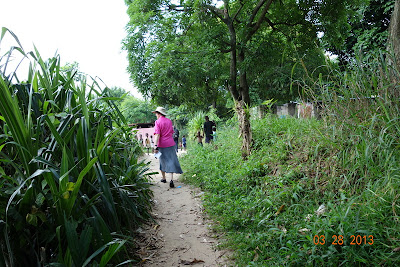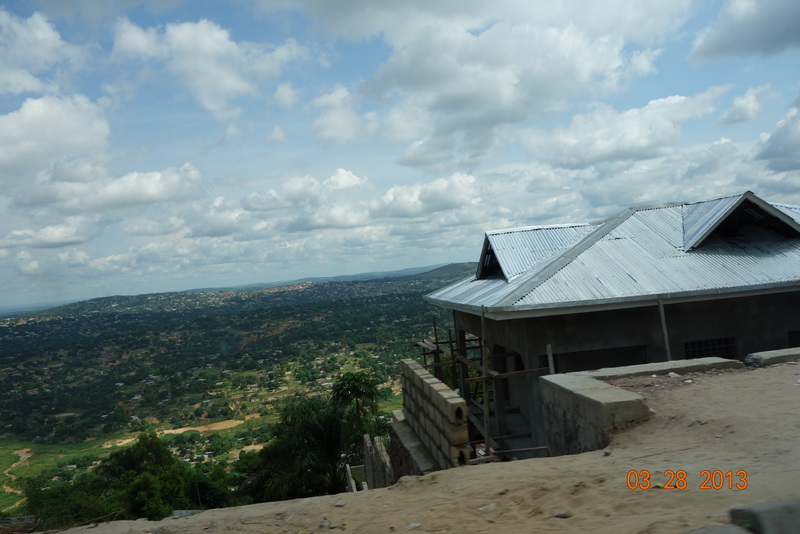 |
| Enroute to a Humanitarian Project. The NGO that builds wells financed by the Church provides a Health and Hygiene seminar for people living near the wells. We were on the road to the event and passed the roadside furniture mart. All the furniture is made here, displayed and put away daily. Our beds were made in this area. The marche extends for several blocks on both sides of the road. |
 |
| The school yard where the classes are held. |
 |
| A class underway with instructor and attendees inside a classroom. |
 |
| Children held at bay at the entrance to the school yard. |
 |
| We took a walk, wending our way through the homes in the village to see well sites under construction. |
 |
| Pathway through the village. |
 |
| View of a stream near a spring capture project and the children playing and fetching water. |
 |
| Village dwelling and yard. |
 |
| Our guide pointed out a few of these, which he called "African Latrines". They are behind each house. |
 |
| Workers are building the capture and reservoirs. |
 |
| The other water project is a hand dug well. The well casing is hand made at the future well site. |
 |
| Bath time by the stream. |






No comments:
Post a Comment